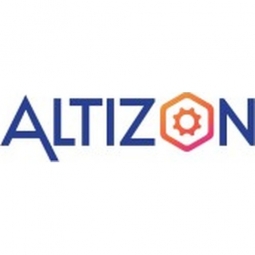- Analytics & Modeling - Big Data Analytics
- Automation & Control - Human Machine Interface (HMI)
- Automation & Control - Programmable Logic Controllers (PLC)
- Infrastructure as a Service (IaaS) - Cloud Storage Services
- Platform as a Service (PaaS) - Application Development Platforms
- Platform as a Service (PaaS) - Data Management Platforms
- Sensors - Temperature Sensors
- Sensors - Utility Meters
- Automotive
- Discrete Manufacturing
- Building Energy Management
- Factory Operations Visibility & Intelligence
- Machine Condition Monitoring
As a part of their Industry 4.0 initiative, the customer primarily wished to leverage IoT for maximizing operational efficiencies, productivity, reducing the energy footprints and maximizing capacity utilization. But there were several challenges at the outset:
Firstly, the customer had multiple assembly lines with a diverse set of machines, systems and sensors, all communicating on different protocols. As such, primarily they needed a partner who could connect diverse set of assets on to a single platform and make use of underutilized ‘dark’ data.
Secondly, the amount of data, data types and their applications was so vast, that the platform handling it, needed to be scalable and flexible.
Lastly, Varroc faced the typical challenge of innovating in ‘Brownfield’ markets – wherein the real bottleneck is in integrating IoT in tandem with both the new and legacy equipment without any further CAPEX for asset substitution.
Altizon determined their IoT integration requirements and filled in their technology gap with Datonis®, a scalable cloud-based Industrial IoT Platform by Altizon. With OPC as the de-facto standard for connectivity, the data was pushed securely and seamlessly from the heterogeneous mix of assets and diverse OT data sources (PLC, Sensors, CNC controllers, Relays, HMIs, CSV etc.) across different locations & with disparate data, loggers using different protocols to OPC Server client. Datonis® would then process this data in real-time using an OPC client (agent) which read the data stored in the format of tags in OPC server client. Within a few weeks of deployment, machines and systems began streaming real-time data to Datonis® as a centralized platform. And the output of these configured tags from OPC UA was utilized in near real-time or in a scheduled manner to provide insights into Overall Equipment Effectiveness (OEE) & Condition Based Monitoring (CBM). In addition to this existing machine data, HMI screen also enabled operators to log supplementary data (such as downtime codes) to further track downtime pockets, improve uptime & calculate the “mean time to resolve”. Datonis® provided for a complete integration with modern web and mobile applications using a comprehensive set of REST APIs. This meant that the customer could inject production data into their ERP systems (case in point SAP) as well as build applications that would present this data in the most suitable manner on any device. As such minimal change management was required & there was no interference in existing work process of Operators. Further Datonis® provides a flexible pricing model which means that the customer only pays for machines connected. This offered a lot of flexibility with no up-front investment required for the platform. Datonis® also provides an uptime SLA so the data is always processed and the system is always available.

Case Study missing?
Start adding your own!
Register with your work email and create a new case study profile for your business.
Related Case Studies.













